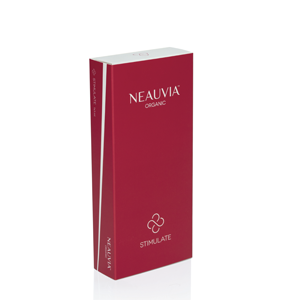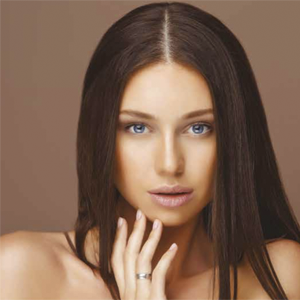NEAUVIA ORGANIC is a new generation of fillers with pure hyaluronic acid, deriving from Bacillus Subtilis, a probiotic and non-pathogenic bacterial strain, and a new cross-linking agent, conferring outstanding properties to the hydrogel: PEG-polymer (Polyethylen-glycol). 
PEG bonds the molecules of hyaluronic acid with a high degree of interpenetration, achieving a more cohesive, visco-elastic and easily moldable filler, which adapts to the structure of the tissues, while longer maintaining the desired shape. The advantages are considerable: fillers have slow biodegradation, do not migrate and ensure natural results and less immunomediate reaction.
Dr. Zerbinati, why Neauvia decided to use the polymer PEG as crosslinker instead of the common BDDE molecule used by all the other companies?
Hyaluronic acid fillers are used in the practice of aesthetic medicine as the gold standard procedure for both the correction of wrinkles and the restoration of volumes, thanks to the technological evolution achieved over the years. Crosslinked agents underwent an evolution, as well, trying to use progressively less toxic chemical substances. Crosslinking with Polyethylene Glycol, known in pharmacology as PEGylation, seems to offer considerable advantages also in the field of fillers for aesthetic medicine use in terms of both safety and gel performances. As regards safety, along with a lower toxicity (30 times less than BDDE), PEG has the peculiar and extremely interesting characteristic of hiding the substance, to which it is bind to, from the host immune system, with consequent reduction of immunogenicity and antigenicity. From a clinical point of view, biomimetic properties – allowing a physiologic integration of the gel into the host tissue and the high biomechanical compatibility of the new hydrogel matrix with a large meshes structure, which are interpenetrated and non static – offer a higher yield in terms of aesthetic correction, the quantity being equal compared to other fillers, as well as a higher heat and mechanical stress resistance, thereby extending the half-life of the HA filler.
Which are the rheological and structural properties of Neauvia hydrogel with PEG?
Both PEG and hyaluronic acid are polymers and their union allows creating matrices with a scaffold architecture that is a three-dimensional network consisting of interpenetrating large meshes: they offer both a better integration of the gel into the tissues and the possibility to include and gradually release molecules, which are useful for skin rejuvenation. Another interesting aspect concerns rheological properties and the cohesiveness of gels; the proper balance between viscosity-elasticity and plasticity, as well as the degree of cohesiveness, allows a perfect dermal integration without risks of visibility/palpability or dislocation of the implant. Pegylation, as already stated before, allows creating three-dimensional interpenetrated matrices; however, it should be underlined that this dynamic structure, highly resistant to mechanical stress and heat, thanks to the longer distances among the HA chains induced by the use of PEG polymer, allows not only to adapt to various tissue densities, but also to reduce the risks of foreign body giant cells formation.
Why Neauvia uses a low percentage and a small molecular size of calcium hydroxyapatite in the filler called Stimulate?
Although calcium hydroxyapatite does not represent an innovation in the field of dermal fillers, the difference with the already existing formulations is substantial for the choice of both dimensions and quantity of the microsphere used.
As regards the size, clinical studies have shown that, in presence of microspheres with size of less than 20 micron, the cellular response involves a significantly higher number of cells than larger microspheres (40-80 / 80-200 micron). Even macrophage activation has proved to be relatively higher compared to microspheres of intermediate or bigger size, whereas it has been highlighted, a lower percentage of giant cells compared to those with microsphere of intermediate or bigger size. Calcium hydroxyapatite microspheres, included into the matrix of the HA filler are gradually released and, due to their size and quantity, they are not encapsulated but, during their degradation, they promote a soft inflammatory response, which results in a prolonged cellular stimulation. Therefore, the hydrated matrix, with scaffold architecture, of the hyaluronic acid gel becomes extremely interesting, since it represents the ideal environment for the fibroblastic activity
What kind of scientific evidences Neauvia got on the collagen production quantity and quality after injection with Stimulate?
Investigations carried out at the Neauvia Research Centre and presented during some International congresses have highlighted how the formulation promotes the fibroblastic stimulation (fig. 1) and a real regeneration of the dermal collagen (fig.2). Observations conducted with an electron micrograph on dermal fibroblasts have highlighted specific ultrastructural aspects strictly connected with their functional stimulation oriented towards the renewal of the constituent collagen of the matrix, contributing also to the plumping action of tissue. Further observations, made with circularly polarized microscope on preparations colored with Picrosirius RED, allowed identifying numerous sites of formation of new collagen in the connective matrix (fig.2). In conclusion, it can be stated the inoculation of the filler is associated with a fibroblast stimulation that produce new matrix, mainly consisting of collagen and amorphous matrix, which represents a synergic action with the plumping action of the filler for a more effective distention of the skin. The formulation containing calcium hydroxyapatite, Stimulate, clinically offers the opportunity to correct deep imperfections or to increase face volumes, improving, at the same time, skin quality and density.
Dr. Nicola Zerbinati
Degree in General Medicine and Surgery from the University of Pavia. Postgraduate Degree in Dermatology and Venereology. Teacher of Aesthetic Medicine in the Postgraduate Course in Aesthetic medicine at the University of Pavia, directed by Prof. G. Robutti. Dr. Zerbinati works as dermatologist in his private practices – CMP and since November 2000 teaches as full Professor of Dermatology and Venereology at the University of Insubria, Varese (Italy). Scientific Coordinator of the International Academy of Cosmetic Gynecology IACG.















